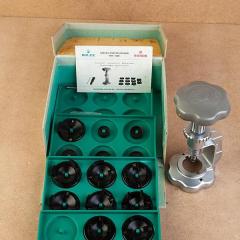Watch Repairs Help & Advice
SECTION RULES
If you are a new member, we would consider it polite for you to introduce yourself here before posting your questions.
Subforums
-
- 2.6k
- posts
-
- 5.1k
- posts
-
- 2.2k
- posts
-
- 3.9k
- posts
-
- 922
- posts
-
- 1.8k
- posts
-
- 1.8k
- posts
-
- 1.3k
- posts
-
- 810
- posts
-
- 749
- posts
-
- 1.7k
- posts
-
- 2.8k
- posts
-
- 331
- posts
8961 topics in this forum
-
- 7 replies
- 1.7k views
-
- 5 replies
- 1.9k views
-
- 4 replies
- 1.6k views
-
- 4 replies
- 853 views
-
- 8 replies
- 1.9k views
-
- 10 replies
- 3.1k views
-
- 22 replies
- 7k views
-
- 10 replies
- 4k views
-
- 2 replies
- 1.4k views
-
- 3 replies
- 1.5k views
-
- 6 replies
- 2.5k views
-
- 14 replies
- 8.3k views
-
- 6 replies
- 2k views
-
- 1 reply
- 1.2k views
-
- 6 replies
- 2.6k views
-
- 8 replies
- 3.2k views
-
- 11 replies
- 1.9k views
-
- 9 replies
- 2k views
-
- 3 replies
- 1.8k views
-
- 23 replies
- 4.6k views
-
- 17 replies
- 2.9k views
-
- 5 replies
- 1.4k views
-
- 24 replies
- 12.9k views
-
- 5 replies
- 5.3k views
-
- 5 replies
- 1.6k views

















